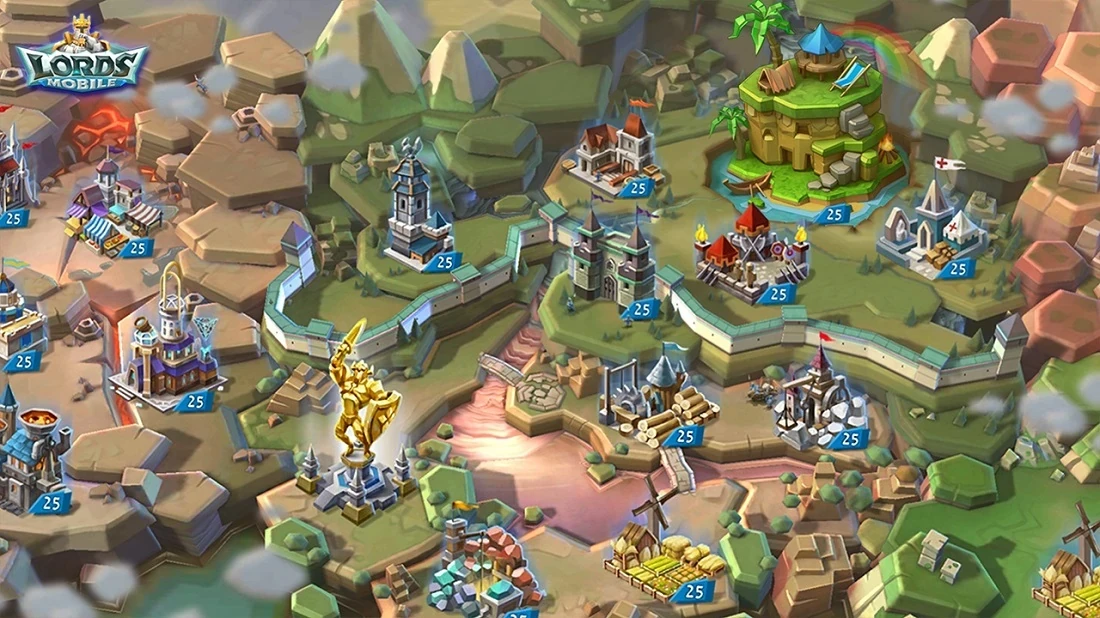If you’re a game developer, building and nurturing player relationships should be high on your priority list.
Why?
Recent privacy changes had a big impact on the mobile game industry. In order to find success in this new era, game businesses will need to adopt a people-first approach. Getting to know your players and building direct connections is essential for a holistic business strategy.
Here’s everything you need to know.
Data source: Facebook Gaming’s Building Direct Connections with Players Playbook
Understand Who Mobile Gamers Are
Currently, there are more than 3.1 billion gamers worldwide. According to Newzoo, that number will grow to 3.7 billion by 2023.
Since such a large portion of the global population plays games, it’s obvious that gamers are a very diverse audience. For that reason, you need to gain a deep knowledge of gamer demographics, interests, and behaviors.
Here are some gamer statistics that will help you understand just how diverse this audience is.
According to Statista, the majority of mobile gamers are women (55%). Furthermore, more than half of all mobile gamers are older than 34 (Mediakix) and the average age of a mobile gamer is 36 (MoPub).
According to Newzoo, for 77% of Gen Z, 73% of Millennials, 54% of Gen X, and 34% of Baby Boomers, mobile is the preferred platform for playing games.

Additionally, Facebook Gaming reports that most US mobile gamers play daily, across all age groups.
However, that diversity is not reflected only in who plays mobile games but also in why people play games and how they engage with games and gaming content.
For example, according to Newzoo, 71% of Gen Z and 67% of Millennials enjoy both playing games and watching gaming content. Thus, engaging with games doesn’t necessarily mean just playing.
Furthermore, different people play for different reasons. For example, some enjoy the social and competitive aspect of mobile games, while others just want to relax and unwind. Because of that, we can group gamers according to their motivations for playing.
Understanding all of these nuances is crucial for building trusting and long-lasting player relationships.
But why are long-lasting player relationships so important?
Keep reading to find out.

Recognize the Impact of Privacy Changes
Players’ relationship to their personal data has changed and privacy has become more important. People want to be able to decide which data they share and how that data is being used.
According to Facebook Gaming, more than half of US mobile gamers don’t feel comfortable sharing personal information with developers.
Because people are becoming wary of sharing their data and require full transparency, the mobile game ecosystem is evolving to meet those demands.
Here are the most important changes and updates regarding user privacy.
Many laws have been put in place to regulate data privacy. For example, GDPR in the EU, LGPD in Brazil, and CCPA in California, all of which have been implemented during the last 3 years.
Furthermore, Google decided to phase out cookies that save information about online activity. By 2023, they will no longer be supported to protect people’s private information.
One of the biggest privacy changes that directly impacted the mobile app and gaming ecosystem was Apple’s iOS 14.5 update. IDFA was no longer a default, but an opt-in feature. In other words, app developers now have to ask users’ permission to track them.
Because advertisers have fewer data available, we now see a decline in performance, rising costs, and difficulties with attribution.
To learn how to thrive in this new environment, check out the following sections.
Focus on First-Party Data
As I’ve mentioned, Apple’s IDFA changes have changed mobile app and game advertising. In order to drive marketing performance, you need to change the way you reach new users and measure the performance of your campaigns.
More specifically, you need to become less reliant on third-party data and focus on first-party data. Furthermore, you should center performance on people.
First-party data refers to data that developers can collect directly from their users.
However, to get players to share their personal information, you need to offer an incentive, as well as a secure way to do so.

According to Facebook Gaming, mobile gamers in the US who are not comfortable with sharing their data say they would be motivated by in-game rewards (45%), easier login (35%), and in-game promotions (35%).
Therefore, in the short term, you should offer exclusive rewards to players who are willing to share their data. Furthermore, you should encourage registration. For example, by allowing players with accounts to save progress across multiple devices.
In the long-term, you need to offer players better security. It’s important to emphasize to players that creating an account with an email address is more secure and that it has additional benefits like restoring purchases or reactivating the account. Furthermore, you should always communicate to players about new content and updates.

Integrating First-Party Data Collection
Above, you can see the process of integrating first-party data collection, as advised by Facebook Gaming.
The first step, as always, is doing research and putting together teams that will work on it.
Then you need to start collecting first-party data like email address, name, location, and purchase history, and processing it securely.
The next step is using first-party data for customer relationship management. A CRM system is a way to manage relationships and interactions with users, which helps you drive growth.
After that, you need to use first-party data for user acquisition campaigns. This type of data can help you better define your audience, reach them with relevant offers, and create a more personalized experience.
Finally, you should test the different aspects of first-party data collection.

However, keep in mind that not all first-party data is equal. In other words, you should prioritize certain types of data. Use the image above as a guide.

Test First-Party Data Collection
The only way to optimize your first-party data collection process is by testing it. Above, you can see some questions you can answer with testing.
For example, you can test when to ask users for their data and whether you should first explain to players why you’re asking for this information.
Furthermore, you can test different rewards and their frequency to see what players respond to best. For example, whether players are more interested in receiving soft currency, loot boxes, or exclusive content.
Additionally, you can examine which types of content updates are players interested in the most and how often you should share them. For example, are they more interested in new characters or seasonal content?

Consider How Your Data Is Handled
Finally, evaluate how your first-party data is handled. Above, you can see a short guide from Facebook Gaming that can help you with this process.
Most importantly, you need to know what type of data you’re collecting and categorize it. How you store the data is also important. Moreover, evaluate your data and remove data you don’t need.
Because consent and privacy laws are at the forefront here, you should make sure you’re following all guidelines and rules to avoid privacy issues. We recommend you consult a privacy specialist to make sure everything is in order.
Establish Player Relationships
A successful first-party data collection strategy begins at the registration level. This will help you establish trustworthy player relationships and deepen them.
Here are some examples of registration screens from Facebook Gaming you can use as a guide.
Email Address Registration

Above, you can see an example of a registration form for a mobile game.
Key thing to keep in mind is that the registration should be quick – minimize the number of input fields and use one input field per screen. Furthermore, you should explain to users why they need to register, i.e., how that benefits them. It’s crucial to give users a good incentive.

Once again, the goal is to use as few input fields as possible. In the example above, there’s only name, email address, and password. Additionally, you should have a sign-in button for existing users.

You also need to get users to verify their email addresses. Above, you can see two examples of how you can do that.
The first one is email verification with deep linking. Players need to click the link that leads them to their inbox to verify the email. The second option is code-based verification which works for both emails and phones. Here, the user needs to enter a code that was sent to their email address or phone number.

Facebook Registration
Above, you can see an example of registering with a Facebook login.
As with email registration, you must explain to users the benefit of logging in with Facebook. In the example, the button says “Play with friends”, which is a powerful motivator.
Also, you should ask for minimum permissions for this type of registration. Facebook Gaming recommends only requiring an email address and friends list.
Use Secondary Data Requests to Improve User Experiences
You can also use additional opt-in channels to make their in-game experience better.
In the example above, players are presented with the option to help their friends or ask for help in the game. However, to do that, they need to opt-in for notifications. If players choose to do so, they will get alert when their friends send or ask for help.
Once again, the goal is to make this process as simple as possible by minimizing the user interactions needed to complete this step.
One thing to keep in mind is that you need to give users the option to delete their accounts.

Nurture Player Relationships
Once you’ve established player relationships, you need to keep users engaged to maintain and deepen these relationships.
You achieve that by providing players with value at every point of their journey.
In the registration phase, explain the benefits of creating an account and why you’re asking for users’ data.
In the welcome message, you need to address the user by their name, which creates a personalized experience. Furthermore, you should further emphasize the benefits of your game.
Then you should send out various value messages. For example, give out rewards or information. However, make sure to connect it to game benefits.
The final stage of a user journey is conversion. However, before moving on to this step, you need to make sure the users clearly understand the value of your offer.
Use Branding to Deepen Player Relationships
How you present your brand has a big impact on player relationships. If your brand is authentic, you’ll be able to establish better and deeper connections with people across the user journey.
In other words, users are more likely to share their information with a well-known and trustworthy brand.
Here are some tips that will help you achieve that.
Work on Your Visual Identity
An appealing and recognizable visual identity is the most important element of creating a strong brand for your mobile game.
Decide on brand colors, fonts, and other assets. Make sure each element follows the same style and works as a whole.
Create an eye-catching logo that hints at what the game is about and follows your brand style. Furthermore, create other visual assets like game screenshots, graphics, and videos that follow the same visual story.
Build Consistency with In-Game Assets
Your ads should also be in line with your brand’s identity, to make them recognizable. Furthermore, you should build consistency by including different game assets in your ad creatives.
That will also help you stand out from your competitors.
Have Clear Messaging Across All Channels
Whether it’s your ad copy, call to action, or push notifications, it’s essential that your messaging is clear and has a unique brand voice and brand tone.
Brand voice refers to what you’re saying, and brand tone refers to how you’re saying it.
This is crucial for building trust and establishing long-lasting player relationships.
Final Thoughts on Player Relationships
The mobile game market is ever-changing and it’s more important than ever to keep up and evolve your mobile game business.
In the privacy-first era, mobile game developers who focus on people and build strong player relationships will thrive. Use this guide to get started on your journey.
If you need any help, comment below – I’ll be happy to provide more info!







Comments